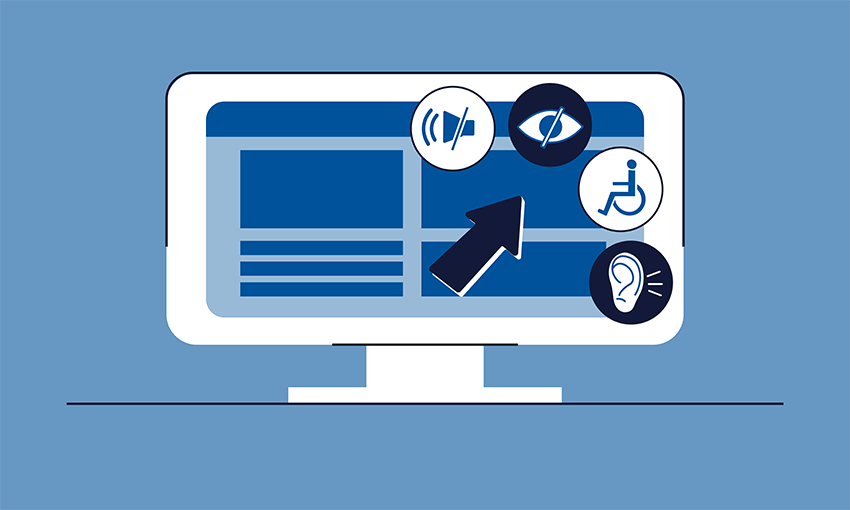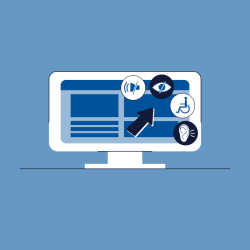Building a More Accessible OIT: Accessibility 101

Editor’s Note: This article is the first in our four-part series, Building a More Accessible OIT, which explores practical ways we can improve digital accessibility at OIT.
With Global Accessibility Awareness Day coming up on May 18, there’s no better time to learn how you can help improve digital accessibility for our colleagues and customers with disabilities.
Whether through age, illness, or injury, most of us will experience a temporary or permanent disability in our lifetime. Some disabilities are visible, such as when a person uses a cane or wheelchair. Others, like cognitive or neurological impairments, are invisible.
Digital accessibility is the process of providing equal access to information and communication technology (ICT), regardless of abilities. ICT includes websites, email, electronic documents, apps, and more. When successful, digital accessibility allows all users of ICT to engage with and contribute to content in an equal yet individual way.
508 and WCAG: What’s the Difference?
Two rigorous sets of guidelines provide federal agencies and the private sector a path to achieve digital accessibility. Federal agencies follow mandates from Section 508, an amendment to the Rehabilitation Act of 1973. The revised mandates of 2018 adopted Web Content Accessibility Guidelines (WCAG), standards used in the private sector.
The World Wide Web Consortium established the framework for digital accessibility when they published WCAG in 1999. The guidelines are evolving benchmarks that enable improvements to accessibility as technology advances. Four central principles serve as the foundation of these guidelines. The “POUR” principles break WCAG down into four main categories to ensure all ICT is:
- (P)erceivable: Requires content to be visible to the senses. For example, websites should include descriptions of images so that screen readers can read the descriptions to users who are visually impaired.
- (O)perable: Ensures content doesn’t require an interaction that a user can’t perform. Content should be accessible by mouse, keyboard navigation, and other assistive technology to accommodate different needs.
- (U)nderstandable: Ensures ICT is predictable so that a user can learn and remember how to navigate it. When forms or website designs are uniform and consistent, users can easily anticipate what to expect on each page.
- (R)obust: Ensures content is compatible with a wide variety of browsers and tools so that a user can choose their preferred technology. An electronic document that’s accessible with a mouse, screen reader, keyboard, and other assistive technology is robust.
There are steps you can take to enhance digital accessibility even if you’re unfamiliar with Section 508 and WCAG. In the coming weeks, this series will illustrate how commonly used digital tools like graphs, images, videos, documents, and virtual meetings can become more accessible. Stay tuned for the second installment, where we’ll examine simple practices to create accessible color and images.

